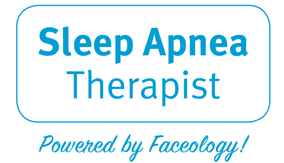CPAP stands for Continuous Positive Airway Pressure. A CPAP machine is basically a device that provides a constant flow of air to help patients with obstructive sleep apnea keep their airway open while they sleep. These units are available on a prescription-only basis in the USA.
I’ve gone into some detail about obstructive sleep apnea in this article but to briefly recap, this potentially dangerous health condition involves the upper airway being restricted during sleep. When this happens, it’s difficult or even impossible to breathe. This triggers an arousal event that forces the body into wakefulness.
As you can imagine, this isn’t very healthy, and obstructive sleep apnea leads to a host of symptoms and health problems.
How Does CPAP Unit Work?
A CPAP machine is an air pump that continuously generates air at low pressure into a mask or device that’s worn on the face. The mask covers the mouth or the nose, or both. This mildly pressurized air has just enough force to keep the airway from closing, which prevents sleep apnea.
Research shows that CPAP treatment can be an effective way to treat sleep apnea. But it’s only effective if patients can tolerate wearing the mask. Sleeping with a mask or device on the face can be uncomfortable, and in many cases, the compliance with CPAP treatment can be low.
Types Of CPAP Machines
A standard CPAP machine provides a consistent level of air pressure to the patient. This pressure doesn’t vary based either on the way the patient is breathing or their state of sleep.
The more advanced APAP (Automatic Positive Airway Pressure) machines are designed to offer a number of pressure settings and to automatically deliver the lowest amount of pressure necessary for the patient to prevent sleep apnea and to get a good night’s sleep. This pressure varies from breath to breath, meaning the airflow is less intrusive, and the chances for a overall comfort are increased over a standard CPAP machine.
BiPAP (BiLevel Positive Airway Pressure) machines are also known as BPAP and VPAP. These units can vary the amount of pressure delivered during the inhale and exhale phases of respiration. The pressure level is kept just high enough to maintain patency of the airway during inhalation when it’s most likely to collapse and be restricted. The reduced pressure delivered during exhalation means that the patient doesn’t have to breathe out against a flow of incoming air.
BiPAP machines are ideal for patients who have a condition that compromises their breathing such as asthma, pneumonia, or chronic obstructive pulmonary disorder (COPD).
In each case, it’s important to note that a CPAP machine isn’t necessarily treating the underlying cause of the sleep disordered breathing or sleep apnea. There’s no doubt that CPAP is an effective and potentially life-saving therapy. However, without directly addressing the airway-related issues, it’s possible to use a CPAP unit indefinitely with no changes in the root cause of the condition.
This is where other complimentary approaches such as surgery, mandibular advancement devices, oral myofunctional exercises, and lifestyle changes need to be considered. Obstructive sleep apnea and sleep disordered breathing are complex conditions and they need a well thought out, pragmatic, and multi-disciplinary methodology to achieve the best, long-term results.


Pingback: What Is A Mandibular Advancement Device? - Myofunctional Therapy Exercises for Mouth Breathing, Sleep Apnea, Braces, and Speech